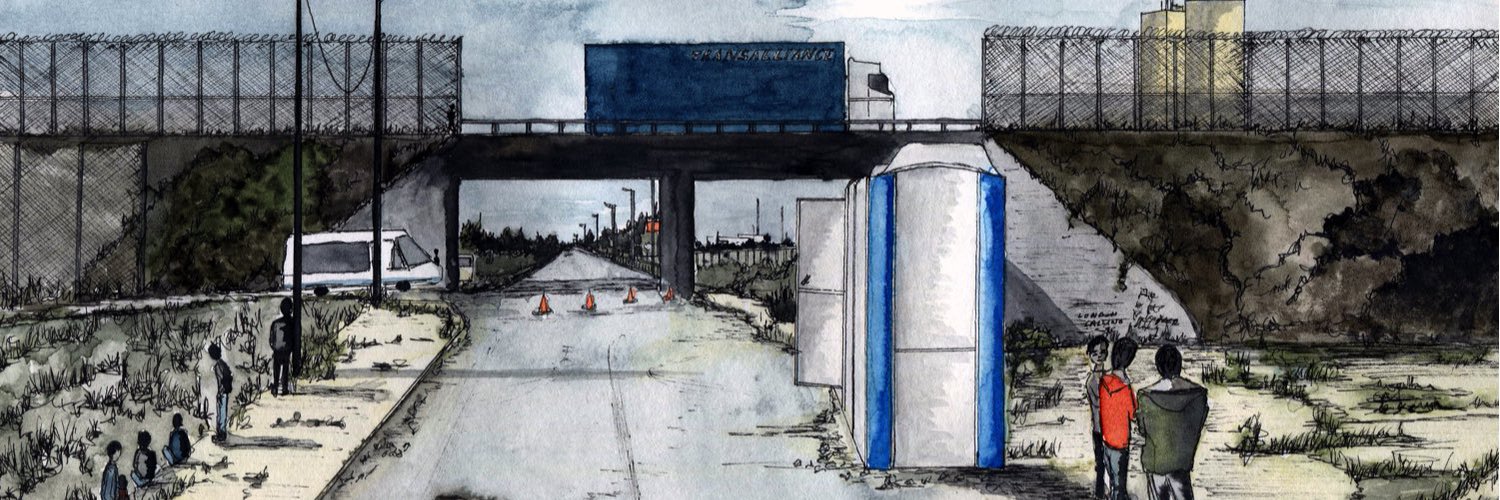
Dans la jungle de #Calais, 1300 mineurs isolés. Des défenseurs des droits des enfants se st rendus sur place #dessin: image via Elisa Perrigueur @ElisaPerrigueur, 13 October 2016
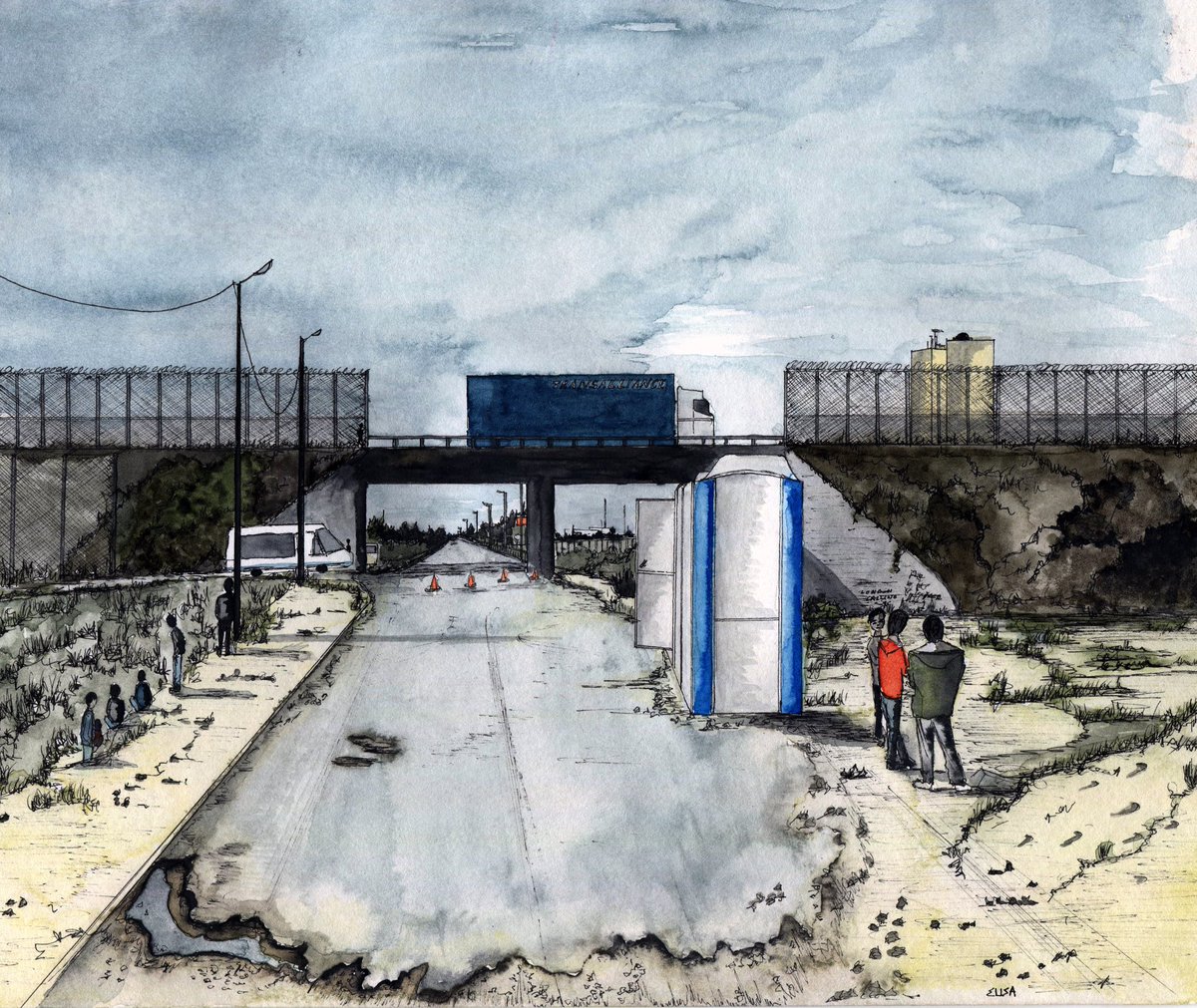
Dans la jungle de #Calais, 1300 mineurs isolés. Des défenseurs des droits des enfants se st rendus sur place #dessin: image via Elisa Perrigueur @ElisaPerrigueur, 13 October 2016

Yvald Saint Joy bathes in his backyard littered with debris caused by Hurricane Matthew, in Sous-Roche, outside Les Cayes, Haiti, Tuesday, Oct. 11, 2016. With little to no outside help arriving a week after Hurricane Matthew, residents have set to work chopping up and burning debris, and creating makeshift partial roofs from salvaged pieces of mangled sheet metal. Saint Joy said he had done the patchwork roof repair himself on the house he shares with his father and two younger siblings. (AP Photo/Rebecca Blackwell): Image via AP images @AP_images, 13 October 2016

A Syrian mother carries her baby girl in a cooking pot at #Ritsona #refugee camp north of #Athens, Oct. 12, 2016. #APPhotoby @PGiannakouris: Image via AP images @AP_images, 13 October 2016

Haitians struggle after #Hurricane Matthew devastation @CheryHaiti @rblackwell: Image via AP images @AP_images, 13 October 2016

Haitians struggle after #Hurricane Matthew devastation @CheryHaiti @rblackwell: Image via AP images @AP_images, 13 October 2016

Haitians struggle after #Hurricane Matthew devastation @CheryHaiti @rblackwell: Image via AP images @AP_images, 13 October 2016

HAITI - A Hurricane Matthew victim sits after receiving food from the UN's World Food Programme in Roche-a-Bateaux. By @hectorretamal #AFP: image via AFP Photo Department @AFPphoto, 13 October 2016

#VUT students hide behind mattresses during clashes with police during #FeesMustFall protests in #SouthAfrica #AFPphoto @SafodienMujahid: image via AFP Photo Department @AFPphoto, 13 October 2016

Scenes of devastation as the siege of Aleppo continues. A still image from video taken October 12, 2016 of a general view of the bomb-damaged Old City area of Aleppo, Syria.: image via Reuters Pictures @reuterspictures, 13 October 2016
Rebel fighters arrive in Idlib following their evacuation from Qudssaya and al-Hamah, neighbourhoods of the Syrian capital: photo by AFP, 14 October 2016

An attendee gives the thumbs up while wearing a Donald Trump mask during a campaign event for Donald Trump, 2016 Republican presidential nominee: photo by Luke Sharrett/Bloomberg, 14 October 2016
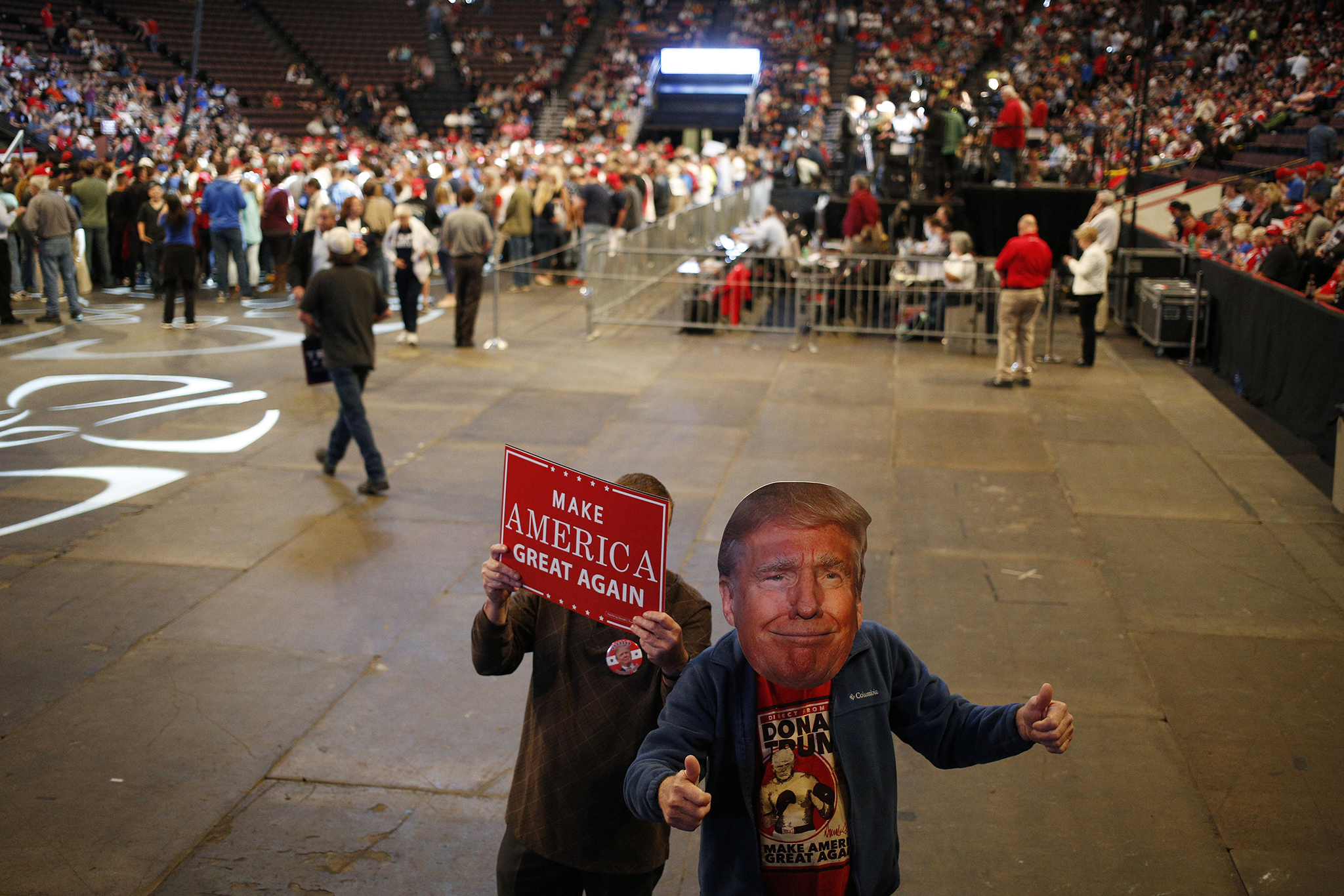
An attendee gives the thumbs up while wearing a Donald Trump mask during a campaign event for Donald Trump, 2016 Republican presidential nominee: photo by Luke Sharrett/Bloomberg, 14 October 2016
Labourers lift a sack of potatoes to load onto a supply truck at a wholesale market in Kolkata, India: photo by Rupak De Chowdhuri/Reuters, 14 October 2016

Labourers lift a sack of potatoes to load onto a supply truck at a wholesale market in Kolkata, India: photo by Rupak De Chowdhuri/Reuters, 14 October 2016

Hillary Clinton at a campaign rally at the Colorado State Fair grounds in Pueblo on Wednesday. The candidate is keeping a relatively low profile, content for her rival to remain in the glare of the spotlight.: photo by Doug Mills/The New York Times, 13 October 2016

Hillary Clinton at a campaign rally at the Colorado State Fair grounds in Pueblo on Wednesday. The candidate is keeping a relatively low profile, content for her rival to remain in the glare of the spotlight.: photo by Doug Mills/The New York Times, 13 October 2016
Protesters chant slogans in front of a barricade during a protest demanding free education, at the Vaal University of Technology in Vanderbijlpark South Africa: photo by Siphiwe Sibeko/Reuters, 13 October 2016
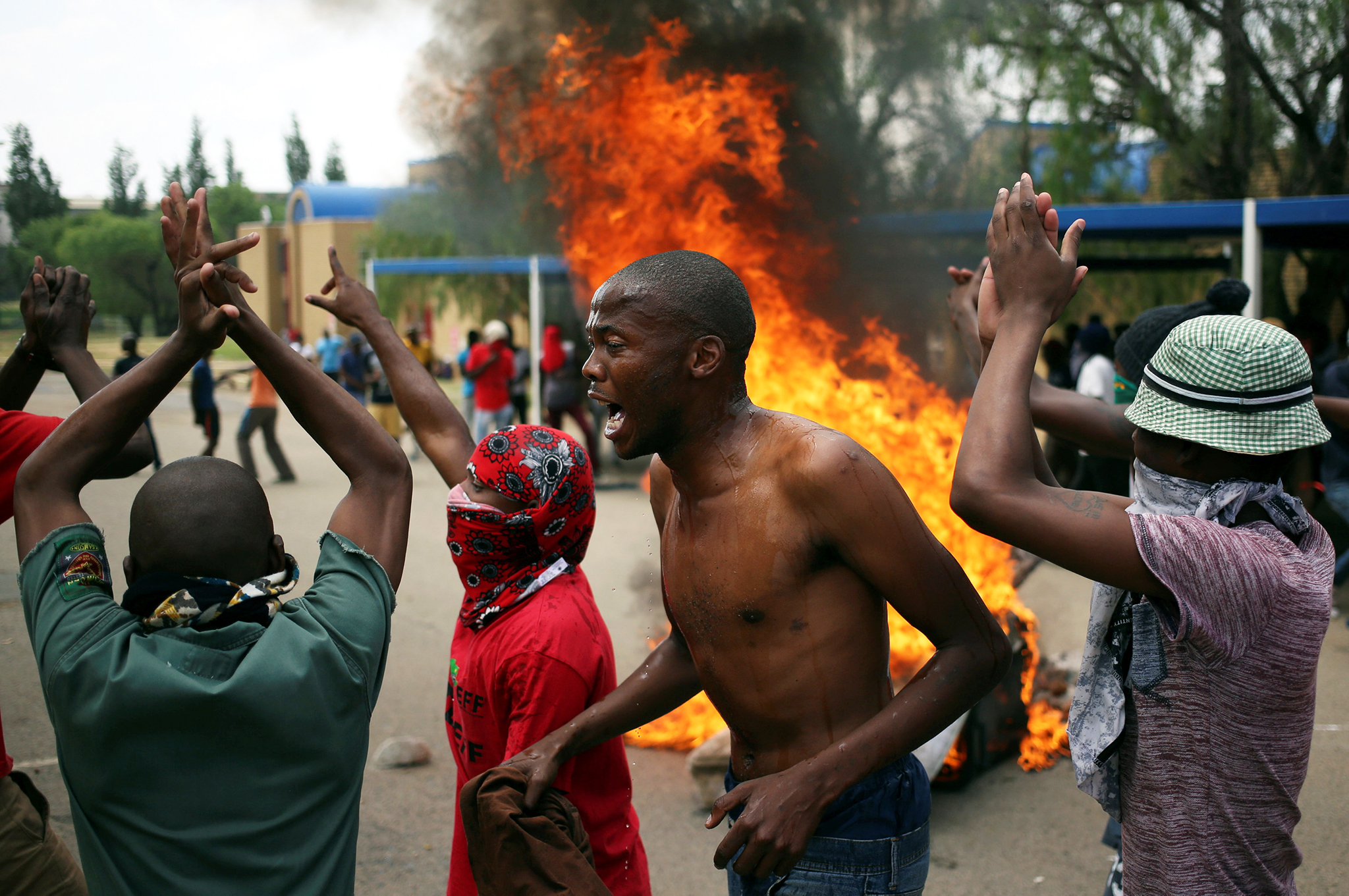
Protesters chant slogans in front of a barricade during a protest demanding free education, at the Vaal University of Technology in Vanderbijlpark South Africa: photo by Siphiwe Sibeko/Reuters, 13 October 2016
Shah Marai: When hope is gone

When hope is gone. @shahmarai on the 15 years since US-led intervention in #Afghanistan @AFPblogs: image via AFP Correspondent @AFPblogs, 14 October 2016
Shah Marai: When hope is gone: AFP Correspondent @AFPblogs, 14 October 2016
Kabul -- The time after
the American invasion was a time of great hope. The golden years. After
the darkness of the Taliban rule, Afghanistan finally seemed to be on
the road to a better life. But today, fifteen years later, that hope has
vanished and life seems to be even harder than before.
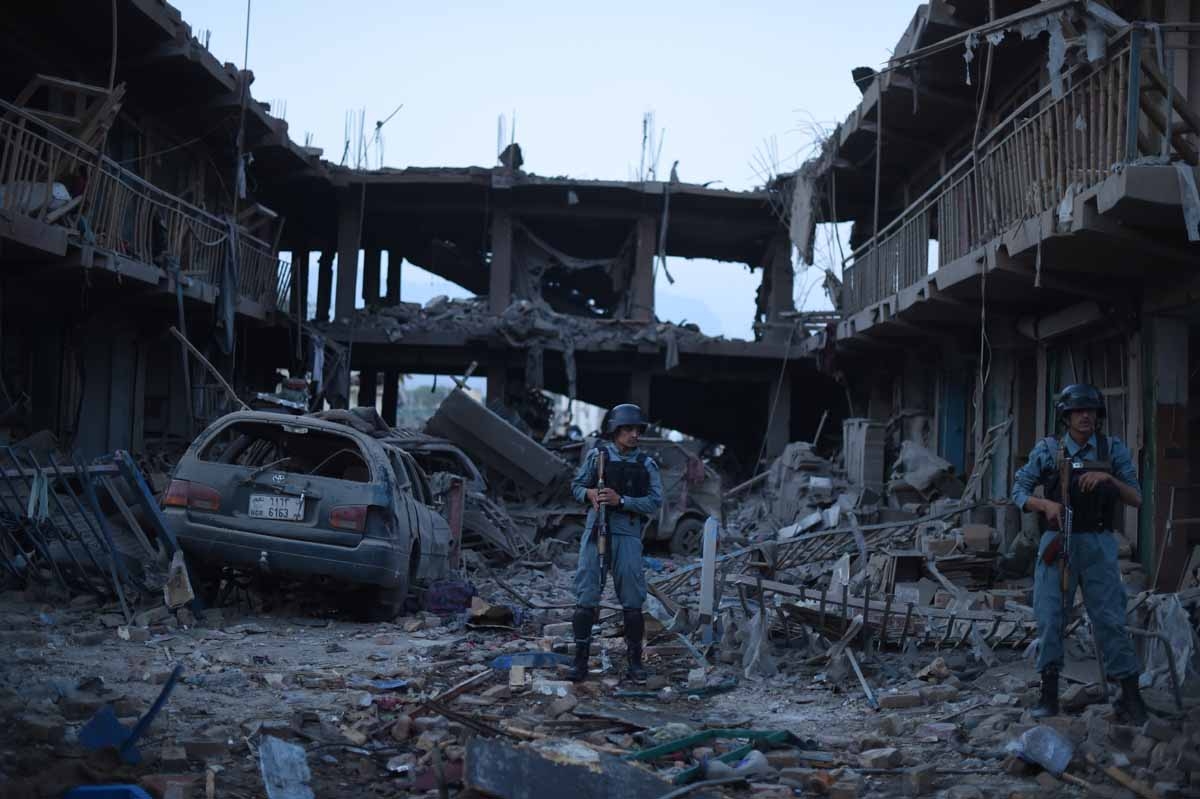
Aftermath of a truck bomb attack on a market in Kabul, August, 2015: photo by Shah Marai / AFP, August 2015
I began working as a photographer for AFP under the Taliban, in 1998.
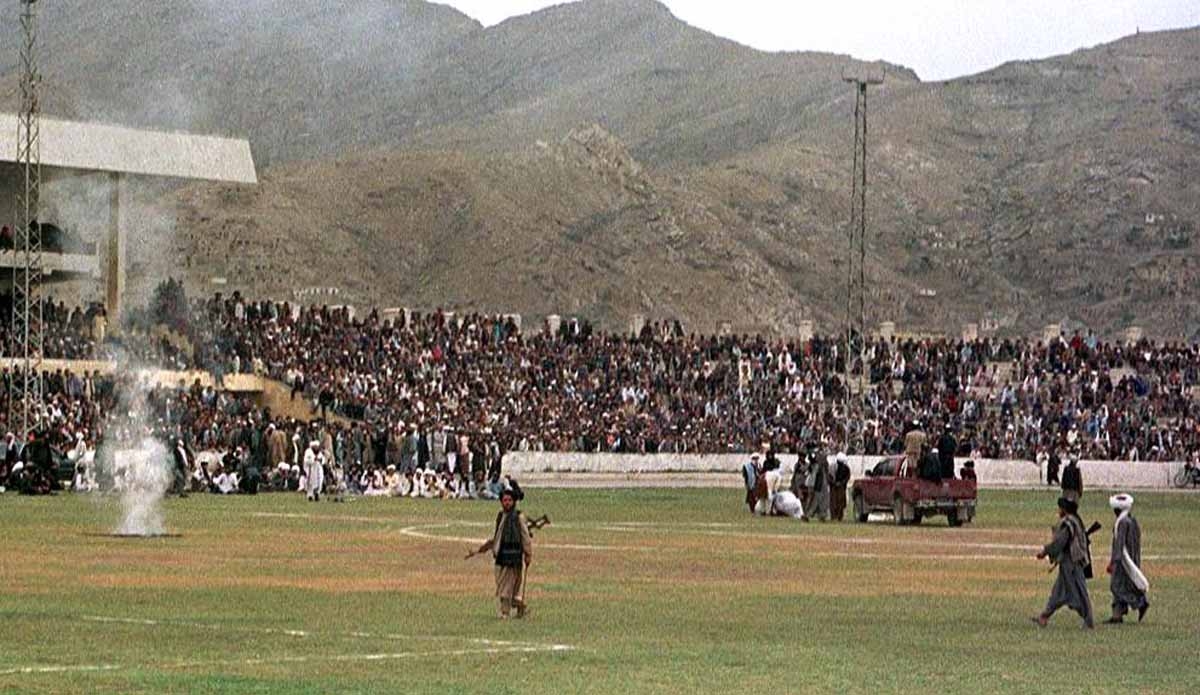
Taliban fighters and Kabul residents watch as surgeons cut off a thief's hand at the national stadium in Kabul, under Taliban rule. August, 1998: photo by Stefan Smith / AFP, August 1998
They hated journalists, so I was always
very discreet -- I always made sure to put on the traditional
shalwar kameez outfit when going outside and I took pictures with a
small camera that I hid in a scarf wrapped around my hand. The Taliban
restrictions made it extremely difficult to work -- they forbid the
photographing of all living things, for example, be they men or animals.
One day I was taking pictures of a line
outside a bakery. Life at the time was hard, people were without work,
prices were going through the roof. Some Taliban approached me.
“What are you doing?” they demanded.
“Nothing,” I answered. “I’m taking pictures of the bread!”
Luckily this was in the age before digital cameras, so they couldn’t check to make sure I was telling the truth.
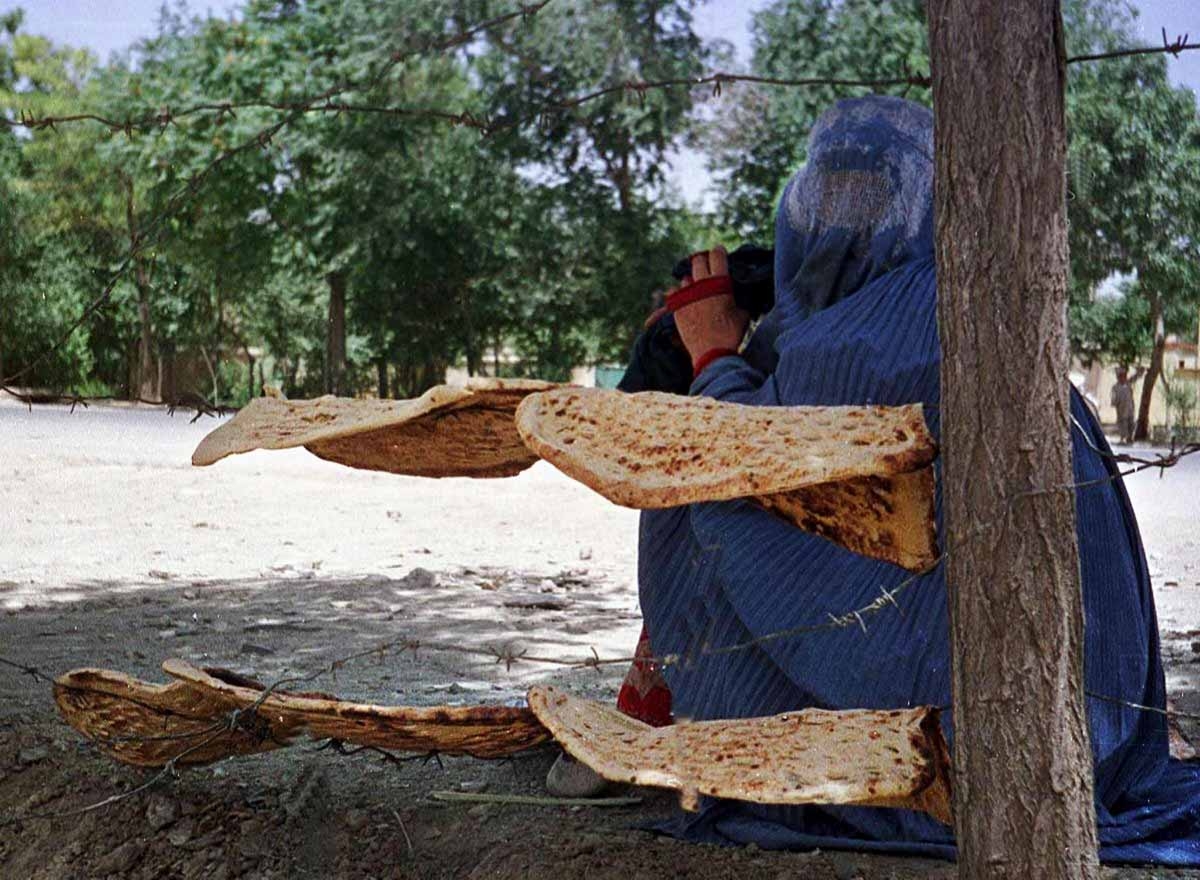
Afghan woman with bread, Kabul: photo by Shah Marai / AFP, June 2001
I rarely put my name on my photos at the time, I just signed them “stringer,” so as not to draw unwanted attention to myself.
Left alone
AFP didn’t really have a bureau
here back then, we had a house in the same neighborhood, Wazir Akbar
Khan, that we do today. Special envoys would take turns coming here, and
we would regularly go to the frontline on the Shomali Plain, where the
Northern Alliance was holding out against the Taliban. Aside from the
BBC, only the three agencies, -- AFP, AP and Reuters -- remained in the
city. Then in 2000 all of the foreigners were finally chased out and I
was left alone to hold down the fort at AFP’s bureau. I would phone in
information to the Islamabad bureau with a satellite phone.
I watched the September 11 attacks on the
BBC, not thinking for a second that there would be possible
repercussions for Afghanistan. It was the Islamabad bureau that warned
me some days later: “Rumors are that the Americans are going to attack.”
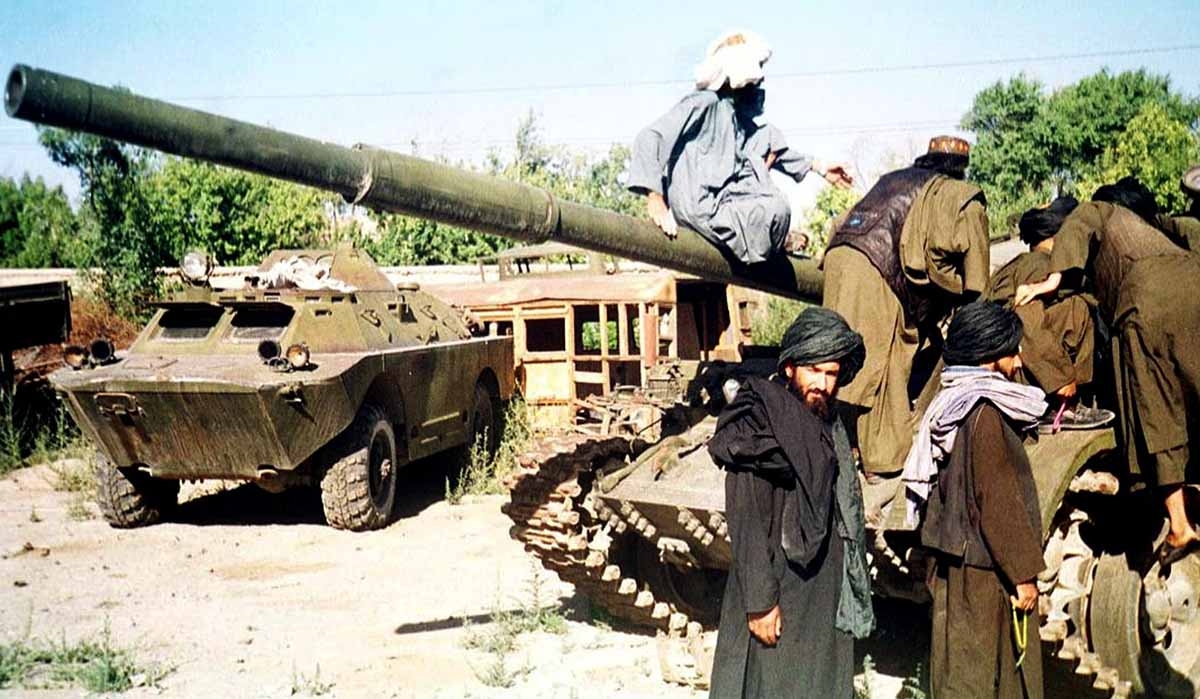
Taliban fighters try to repair a broken tank in Kabul, in anticipation of a possible US attack: photo by Shah Marai / AFP, 2 October 2001
The bombings began less than a month
later, on October 7, targeting the city of Kandahar near the Pakistani
border, that the Taliban had made as their capital.
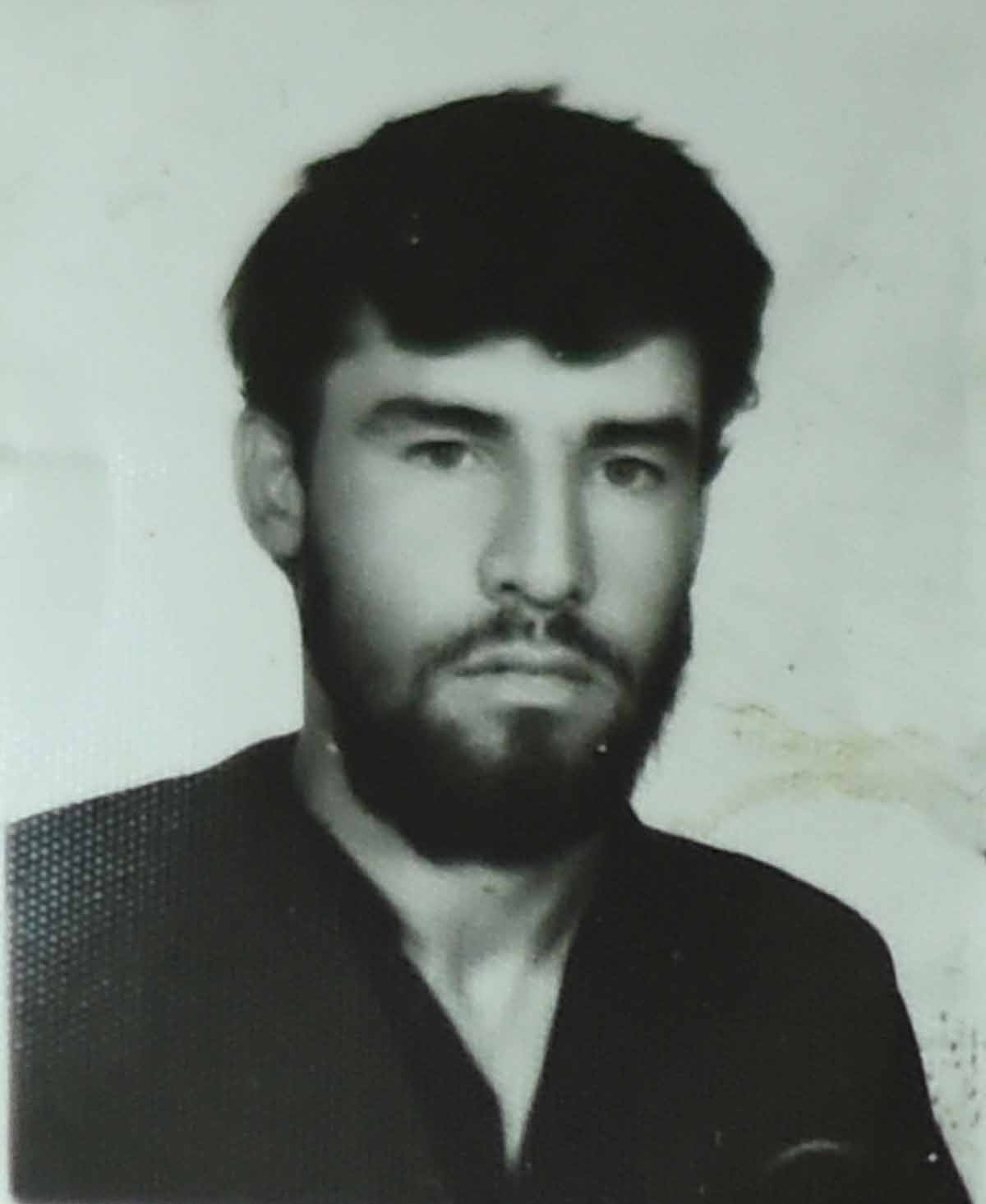
AFP correspondent Shah Marai during the time of Taliban rule, when beards were mandatory for men: photo courtesy of Shah Marai
I was in the middle of phoning in the
information to Islamabad when I heard the planes over Kabul. The first
bombs were dropped near the airport. I didn’t sleep that night, but I
couldn’t go outside.
The following morning I headed to the
airport in my car. Not far from it, I came across a group of several
dozen Taliban fighters, dressed in black.
One of them approached me. “Listen, I’m nice today so I’m not going to kill you, but get out of here right away.”
I turned around, drove back and left my
car at the office. The city was deserted. I came back with my bike, like
an ordinary guy, a scarf wrapped around my hand to hide my camera. I
took six photos that day, just six. I ended up sending two of them.
Coming out from the shadows
Then one morning, the Taliban were
gone, vanishing into thin air. You should have seen it. The streets
were filled with people. It was like people were coming out from the
shadows into the light of life again.
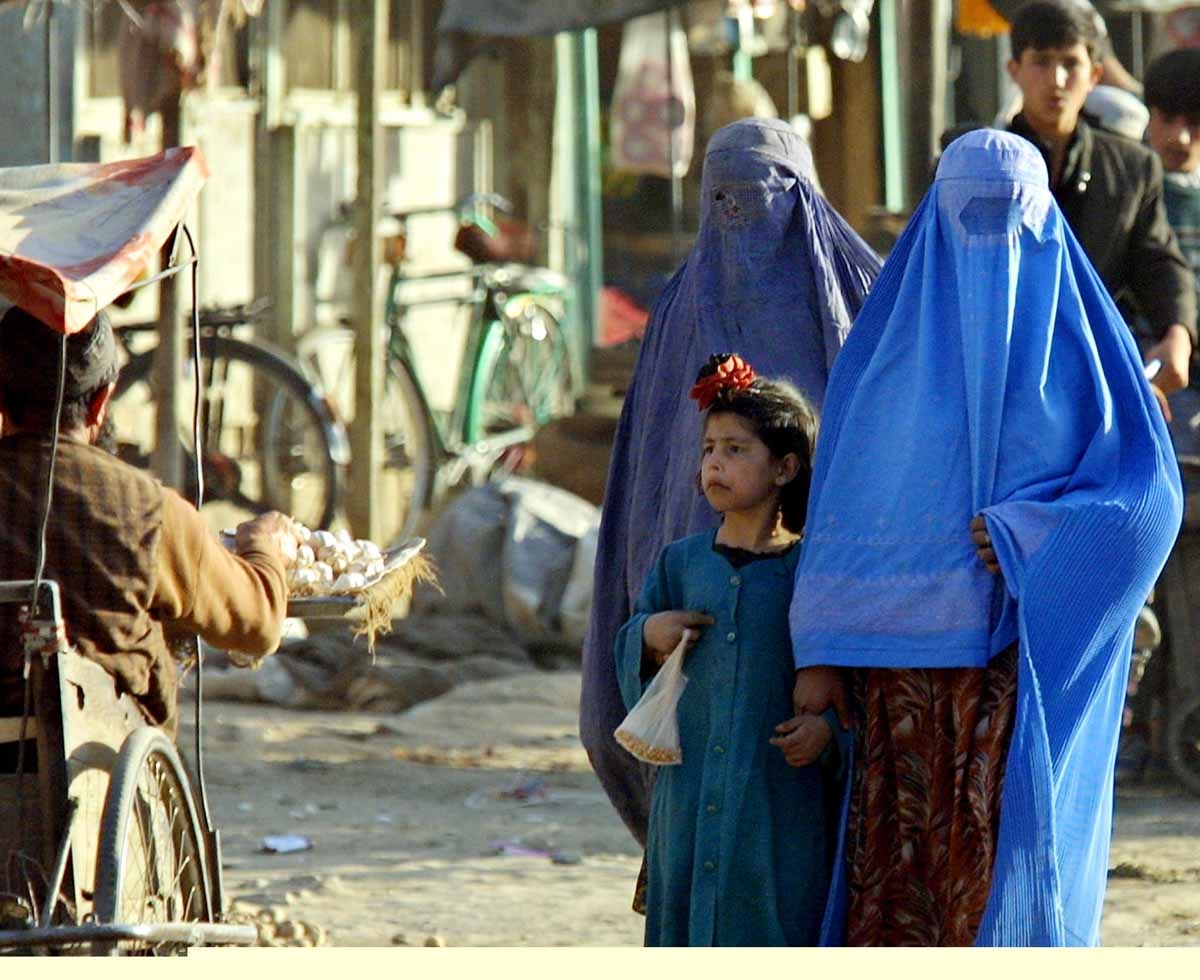
Afghani women walk in Kabul on 14 November 2001. Just a few days before, before the Taliban were chased out, they were forbidden to go outside without close male relatives.: photo by Alexander Nemenov / AFP, 14 November 2001
Colleagues began arriving in droves. AFP
sent a text reporter and a photographer from Moscow right away and
before you knew it, there were a dozen of us. Kabul became Journalistan.
The office was never empty.
I helped out everybody, be it to find
lodging, a car, a fixer, or a best way to get somewhere. My best friend
opened the Sultan Guesthouse, the first one in Kabul and asked me to
join him in the venture. I should have, he ended up making a fortune!
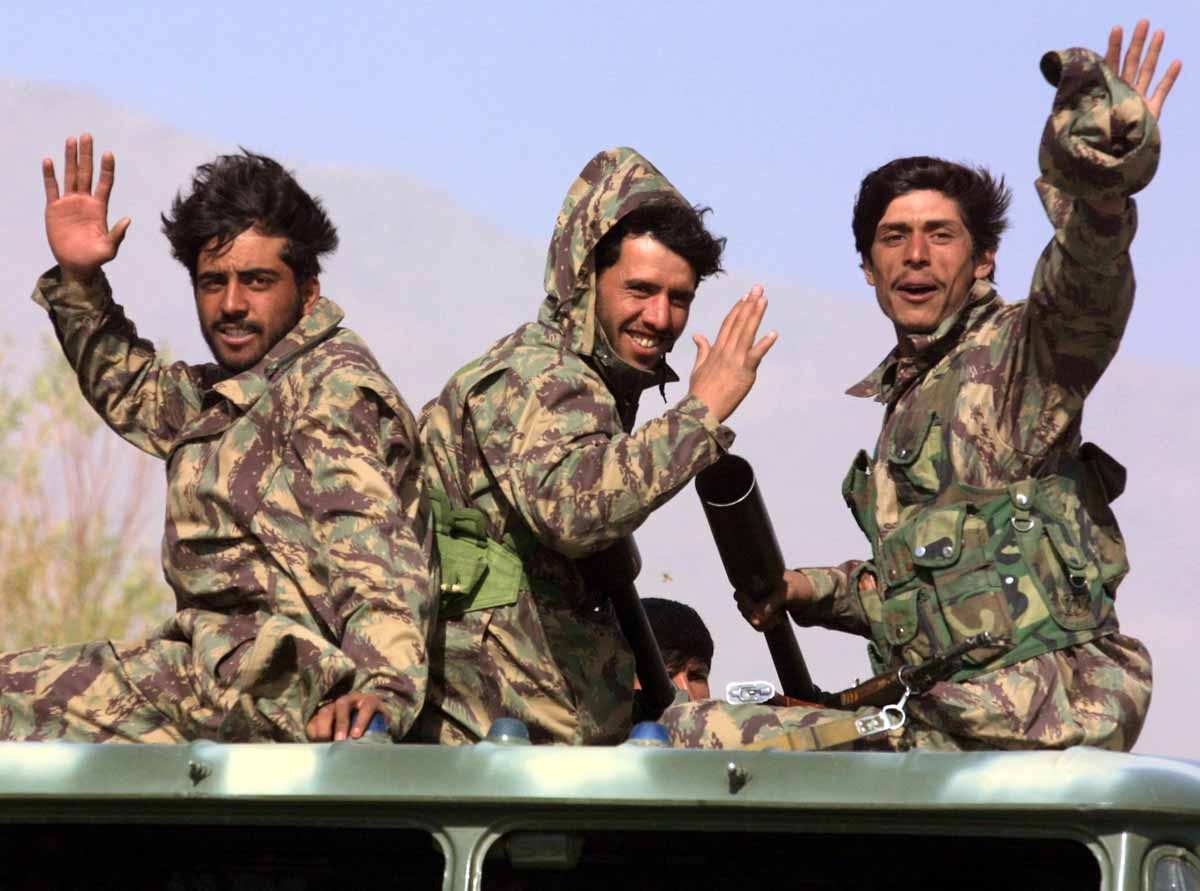
Soldiers of the anti-Taliban Northern Alliance wave on November 12, 2001, a few days before they triumphantly entered Kabul after the fall of the Taliban: photo by Alexander Nemenov / AFP, 12 November 2001
It was incredible to see all those
foreigners after all the years of isolation under the Taliban. They came
from everywhere, and groups of children would run ahead of them on the
streets. I remember one young man, holding a dollar, repeating over and
over: “It’s the first dollar that I’ve ever held!”
A brief time of hope
It was a time of great hope. The
golden years. No fighting in the city. The streets were filled with
troops from Britain, France, Germany, Canada, Italy, Turkey. The
soldiers would patrol the city on foot, saying hello, relaxed and
smiling. I could photograph them as much as I wanted.
You could travel anywhere, south, east, west. Everywhere was safe.
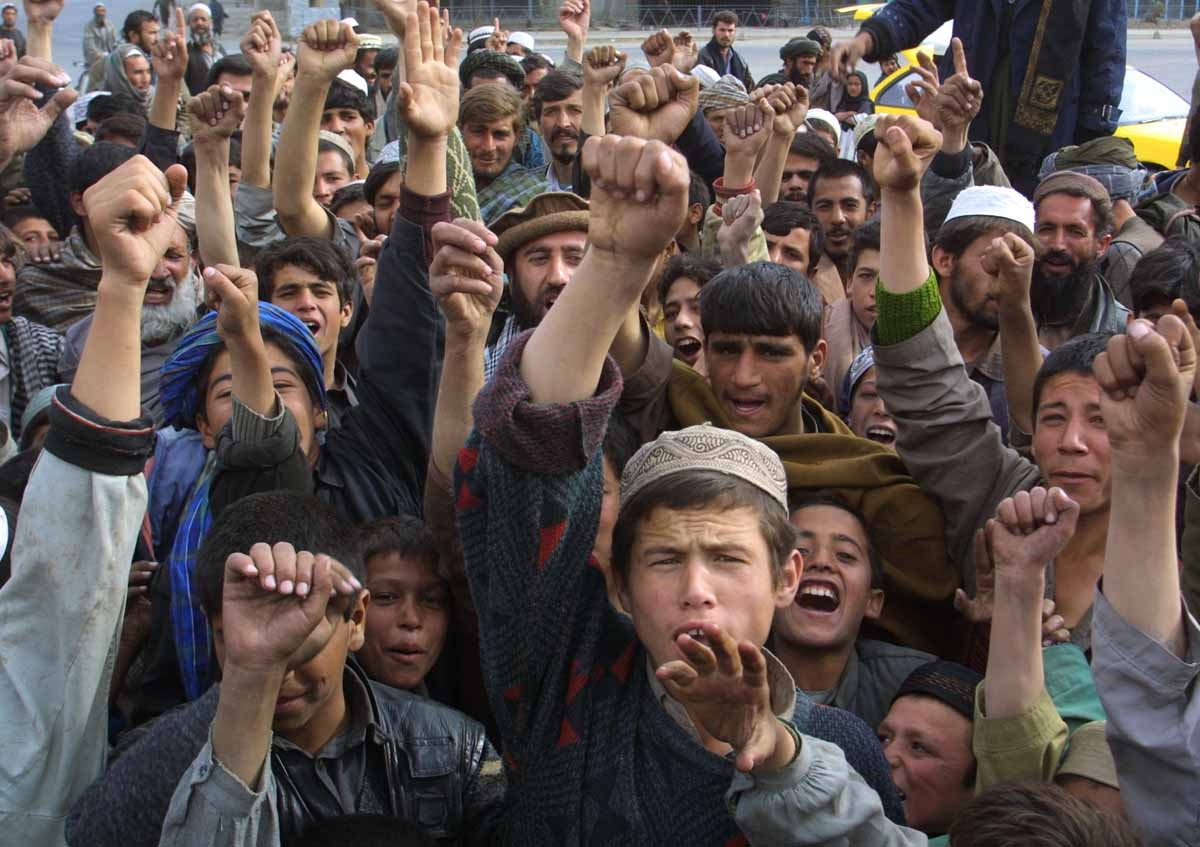
Kabul residents celebrate on November 13, 2001 after the Taliban were chased from the capital: photo by Alexander Nemenov / AFP, 13 November 2001
And then in 2004, the Taliban came back.
First in the Ghazni province in the southeast. Then in 2005 and 2006,
they began to spread out, like a virus. Then the attacks started in
Kabul, targeting places frequented by foreigners. The party was over.
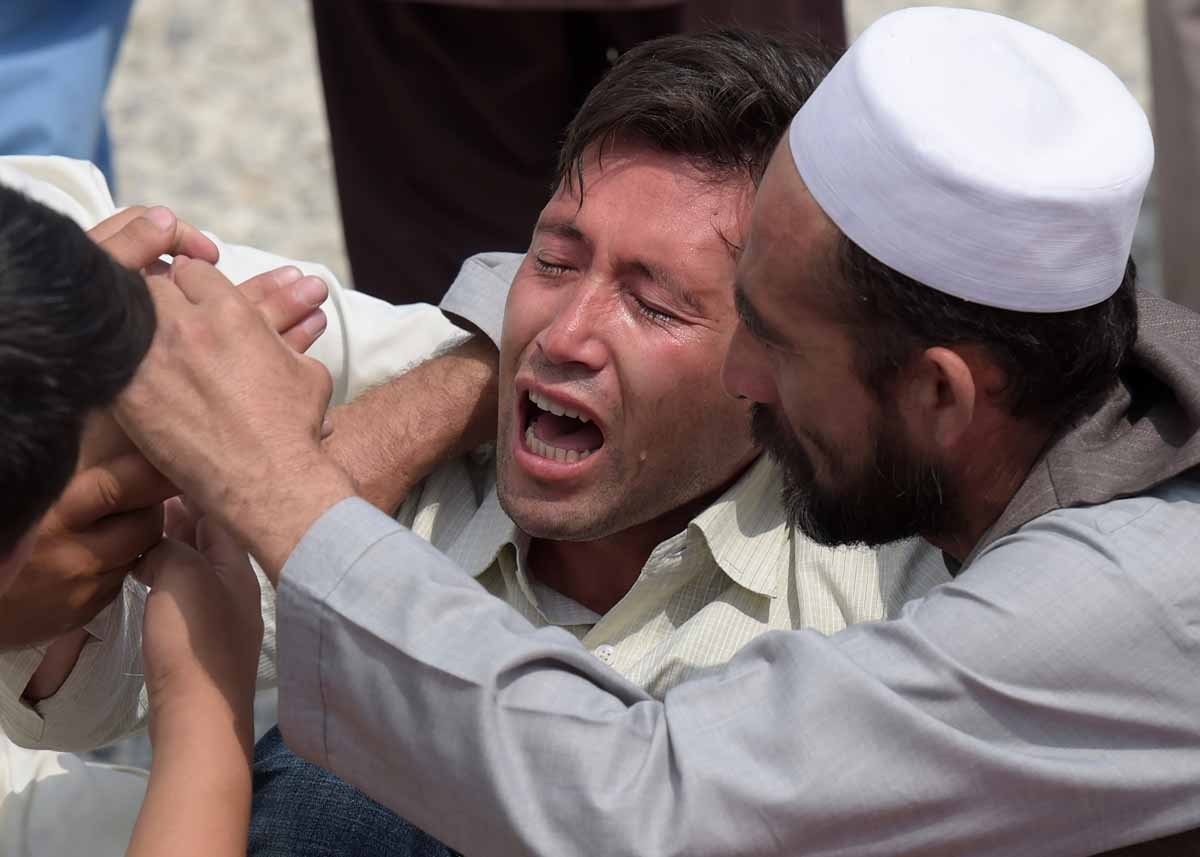
Mourning victims of a twin suicide attack at a mosque in Kabul: photo by Shah Marai / AFP, July 2016
Today the Taliban are again everywhere and
we are stuck in Kabul most of the time. T-Walls, those concrete blocks
designed to protect against booby-trapped cars and trucks, have sprouted
all over the city. People are no longer friendly toward someone with a
camera. Often they become aggressive. People don’t trust anyone,
especially someone working for a foreign news agency -- ‘are you a spy?”
they ask.
There is no more hope
Fifteen years after the American
intervention, the Afghans find themselves without money, without work,
just with the Taliban at their doorstep. With the withdrawal of
essential Western troops in 2014, many foreigners have left and have
been forgotten, as have the billions of dollars poured into this
country.
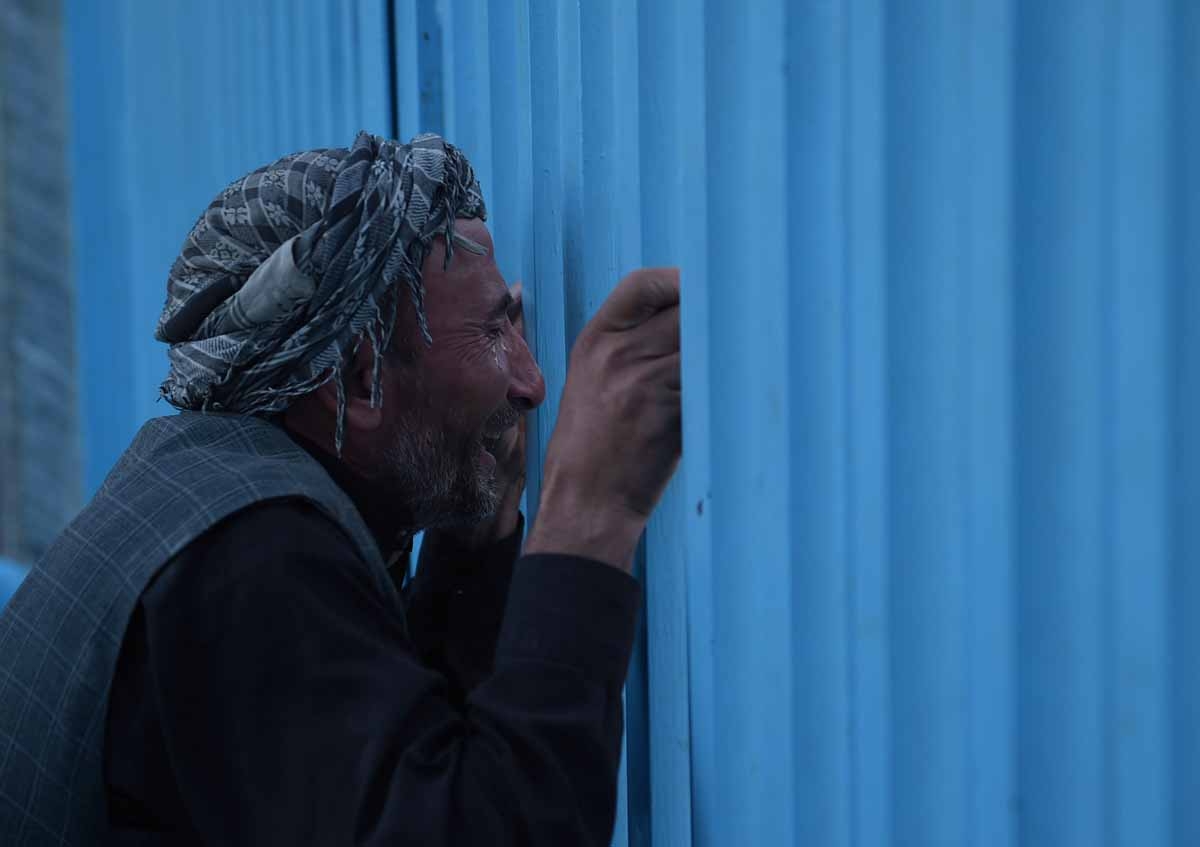
An Afghan man who lost his father in an attack weeps at the main gate of the Karte Sakhi shrine in Kabul: photo by Shah Marai / AFP, October 2016
I long for those years, immediately
following the arrival of the Americans. Of course the city has changed a
lot since 2001. New buildings have been built, large avenues have
replaced tiny streets. The signs of war have all but disappeared --
except for the old Darulaman royal palace, you won’t see a ruin in the
city. The stores are full and you can find almost anything.
But
there is no more hope. Life seems to
be even more difficult than under the Taliban because of the insecurity.
I don’t dare to take my children for a walk. I have five and they spend
their time cooped up inside the house. Every morning as I go to the
office and every evening when I return home, all I think of are cars
that can be booby-trapped, or of suicide bombers coming out of a crowd. I
can’t take the risk. So we don’t go out. I remember all too well my
friend and colleague Sardar, who was killed with his wife and two
daughters while on an outing at a hotel, with only his small son somehow
surviving the attack.
I have never felt life to have so little prospects and I don’t see a way out. It’s a time of anxiety.
This blog was written with Anne Chaon in Kabul and translated by Yana Dlugy in Paris
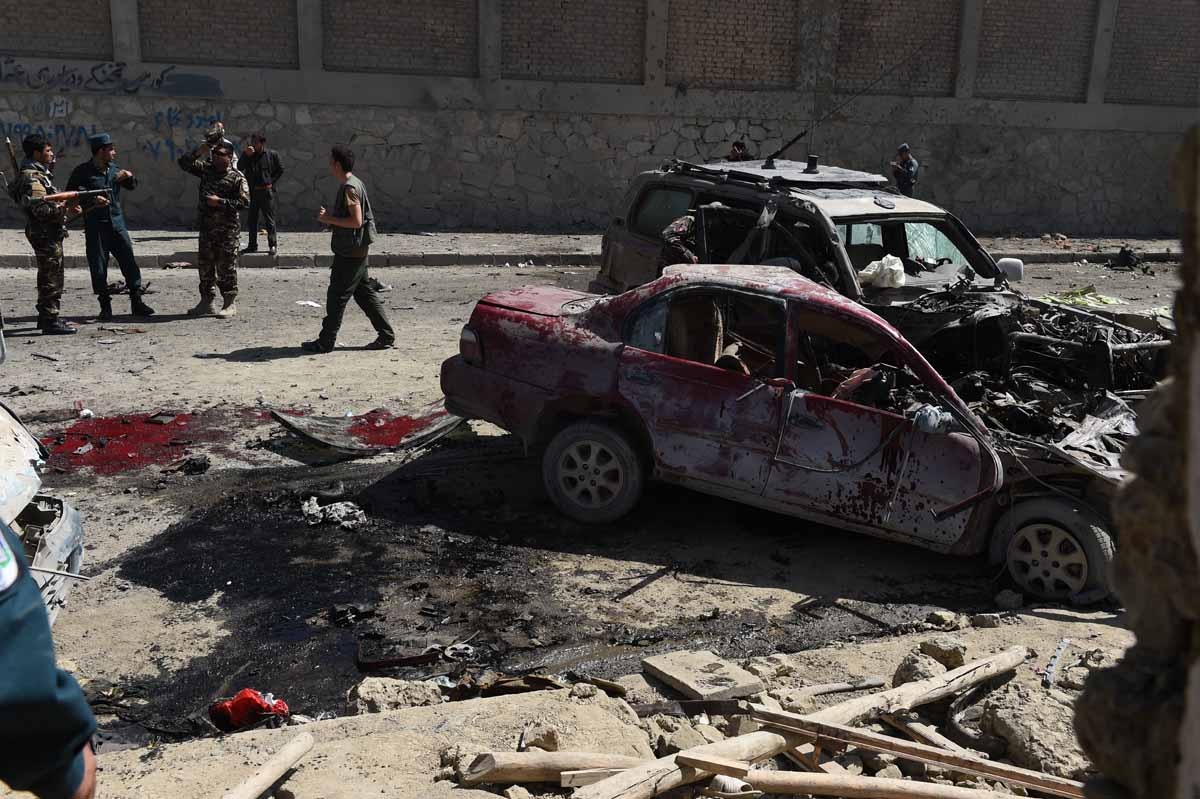
Aftermath of a suicide attack in Kabul: photo by Shah Marai / AFP, May 2015
"All I want to do..."

Trinidad, Colorado: photo by Jorge Guadalupe Lizárraga, October 2016

Trinidad, Colorado: photo by Jorge Guadalupe Lizárraga, October 2016

Portales, New Mexico: photo by Jorge Guadalupe Lizárraga, October 2016

Portales, New Mexico: photo by Jorge Guadalupe Lizárraga, October 2016

Portales, New Mexico: photo by Jorge Guadalupe Lizárraga, October 2016

Portales, New Mexico: photo by Jorge Guadalupe Lizárraga, October 2016

Portales, New Mexico: photo by Jorge Guadalupe Lizárraga, October 2016

Portales, New Mexico: photo by Jorge Guadalupe Lizárraga, October 2016
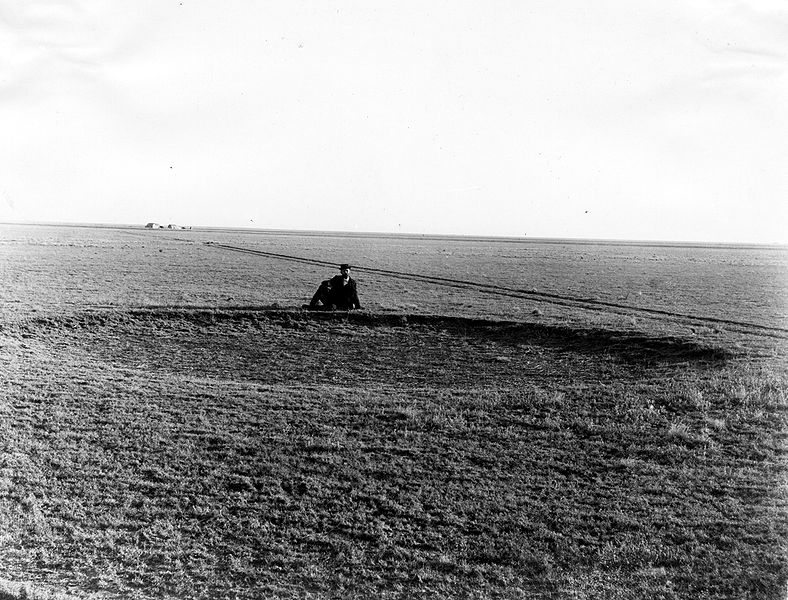
High Plains buffalo wallow, shallow depression in level surface of country underlain by the Oglalla formation, 1897: photo by Willard Drake Johnson, from US Geological Survey, 1920 (USGS)
All I want to do
is to go
back to
Pueblo
and let the wind blow
right through me
in the parking lot
by the Trailways Depot
is to go
back to
Pueblo
and let the wind blow
right through me
in the parking lot
by the Trailways Depot

1940s Continental Trailways bus depot sign: photo via Forever Trailways Memories
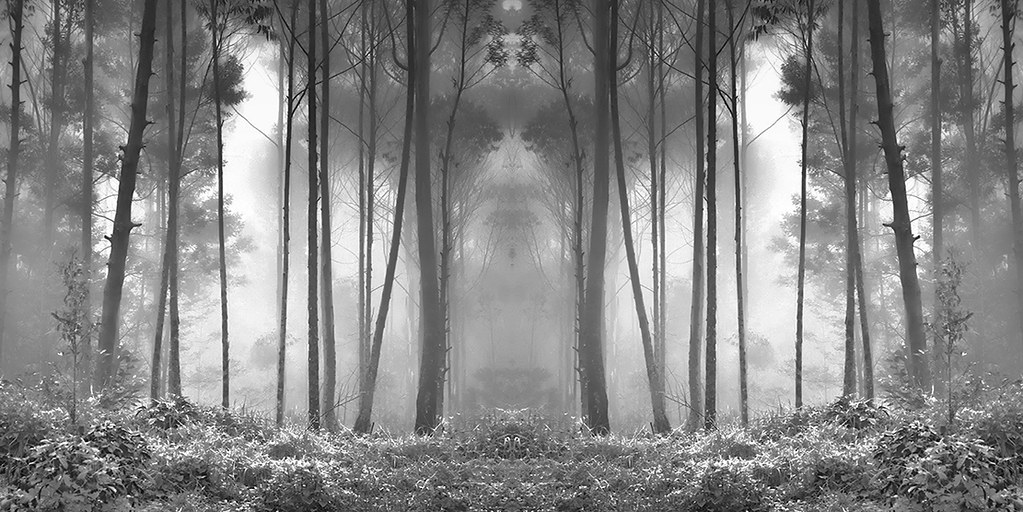
Sacred Passage: photo by Hengki Koentjoro, 7 January 2011
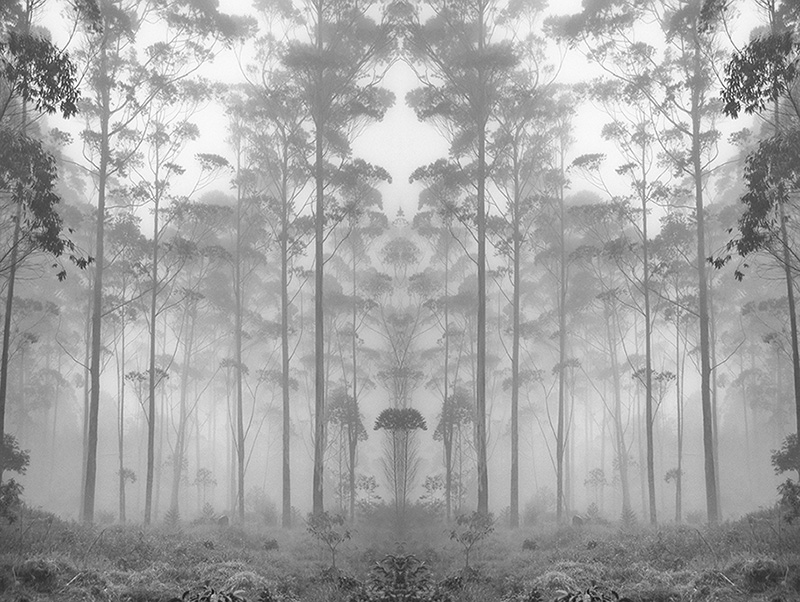
Botanical Garden: photo by Hengki Koentjoro, 7 January 2011
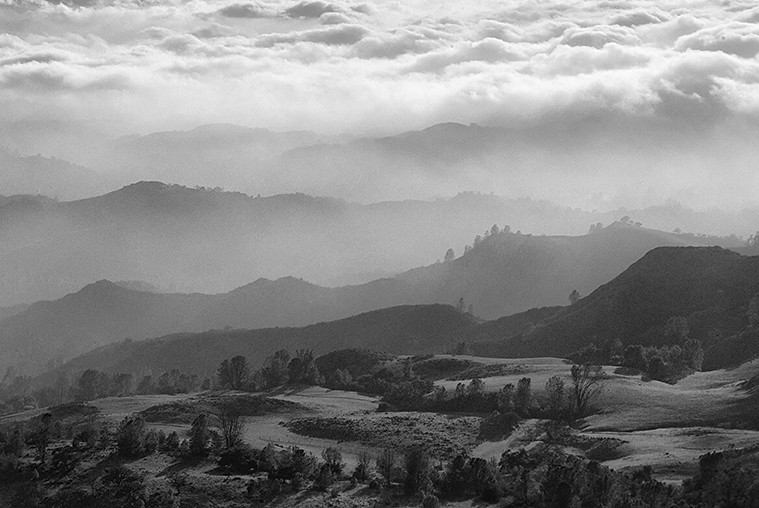
Obispo: photo by Hengki Koentjoro, 21 August 2016
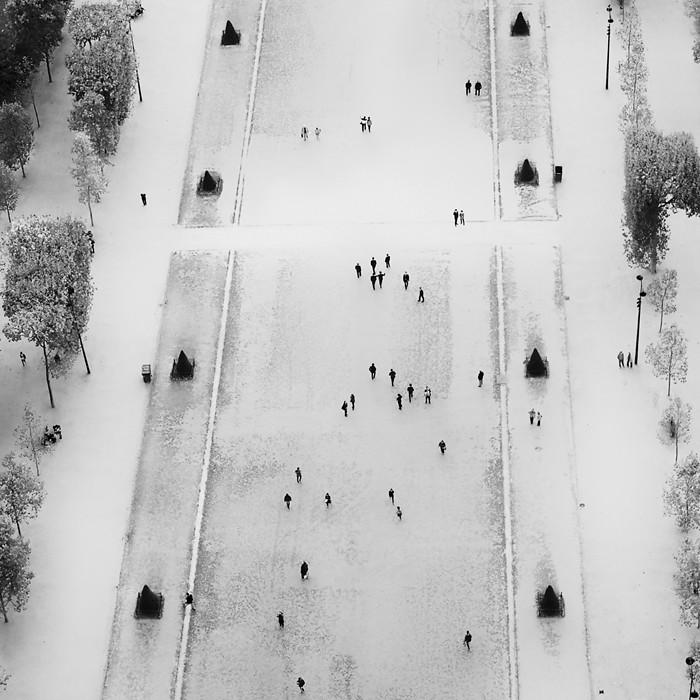
Petite: photo by Hengki Koentjoro, 12 October 2016
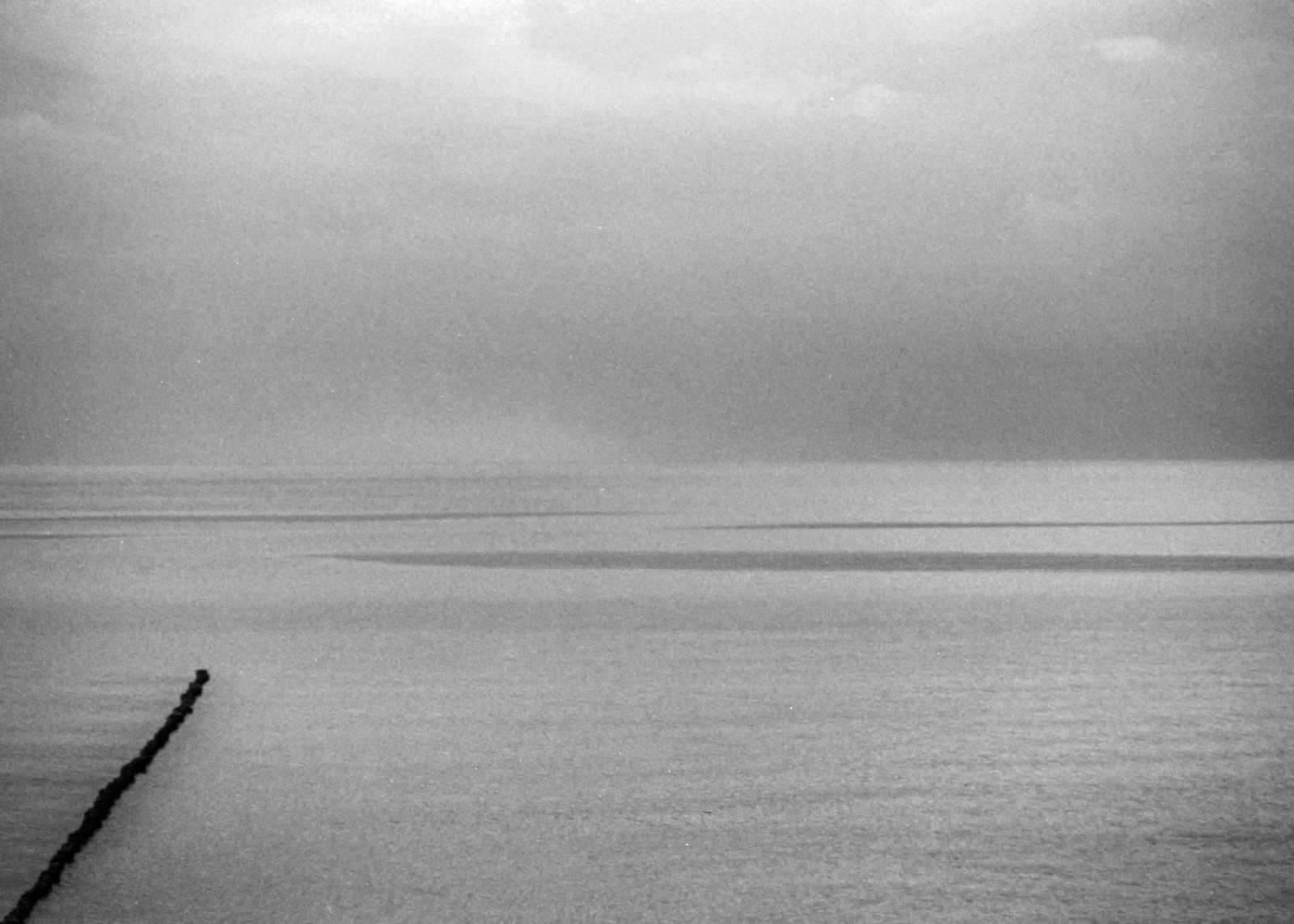
Grey [Hiddensee]: photo by Ronny-1976, 18 July 2016

Grey [Hiddensee]: photo by Ronny-1976, 18 July 2016
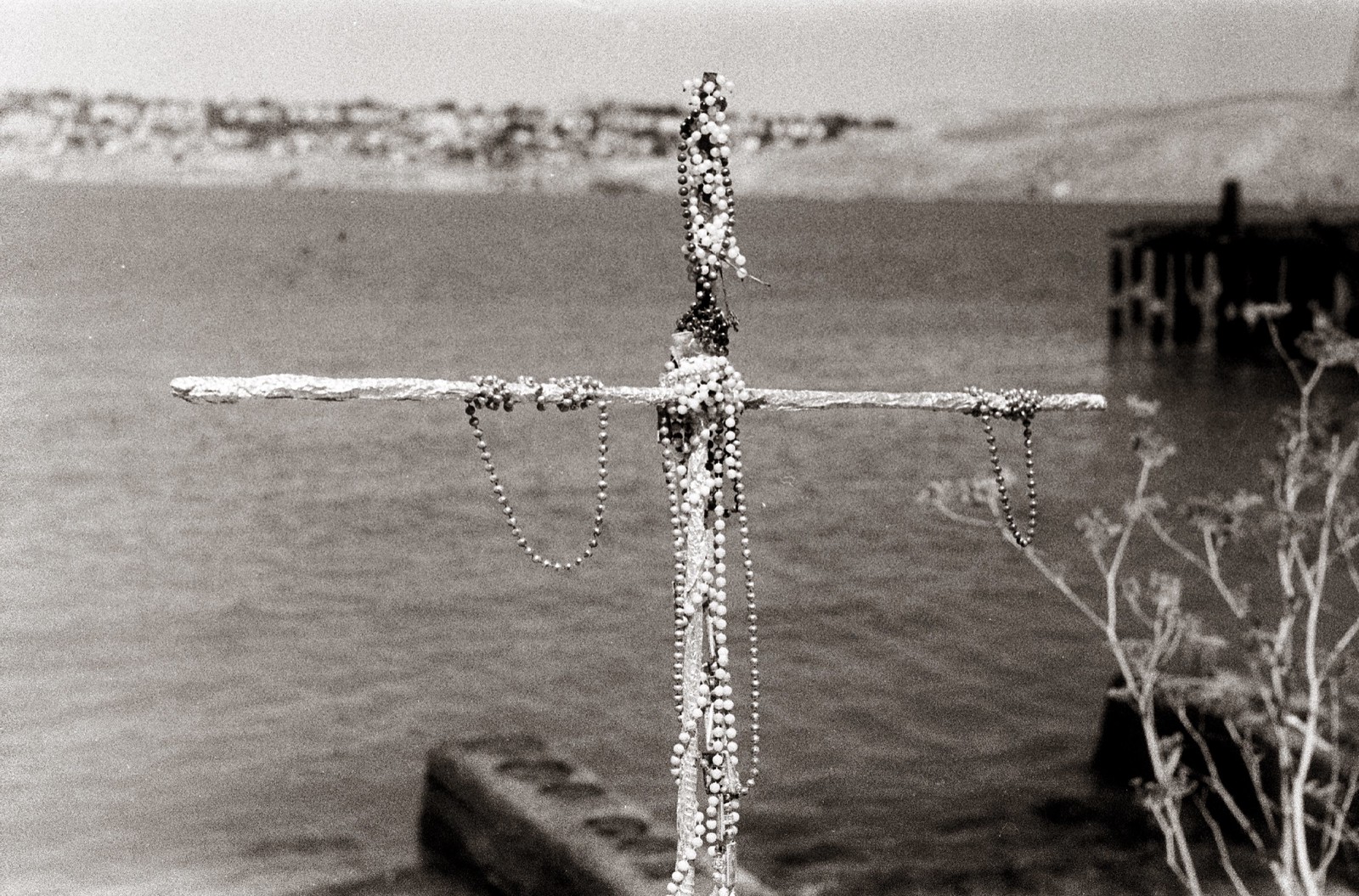
Memorial (Crockett, California): photo by efo, September 2016

Memorial (Crockett, California): photo by efo, September 2016
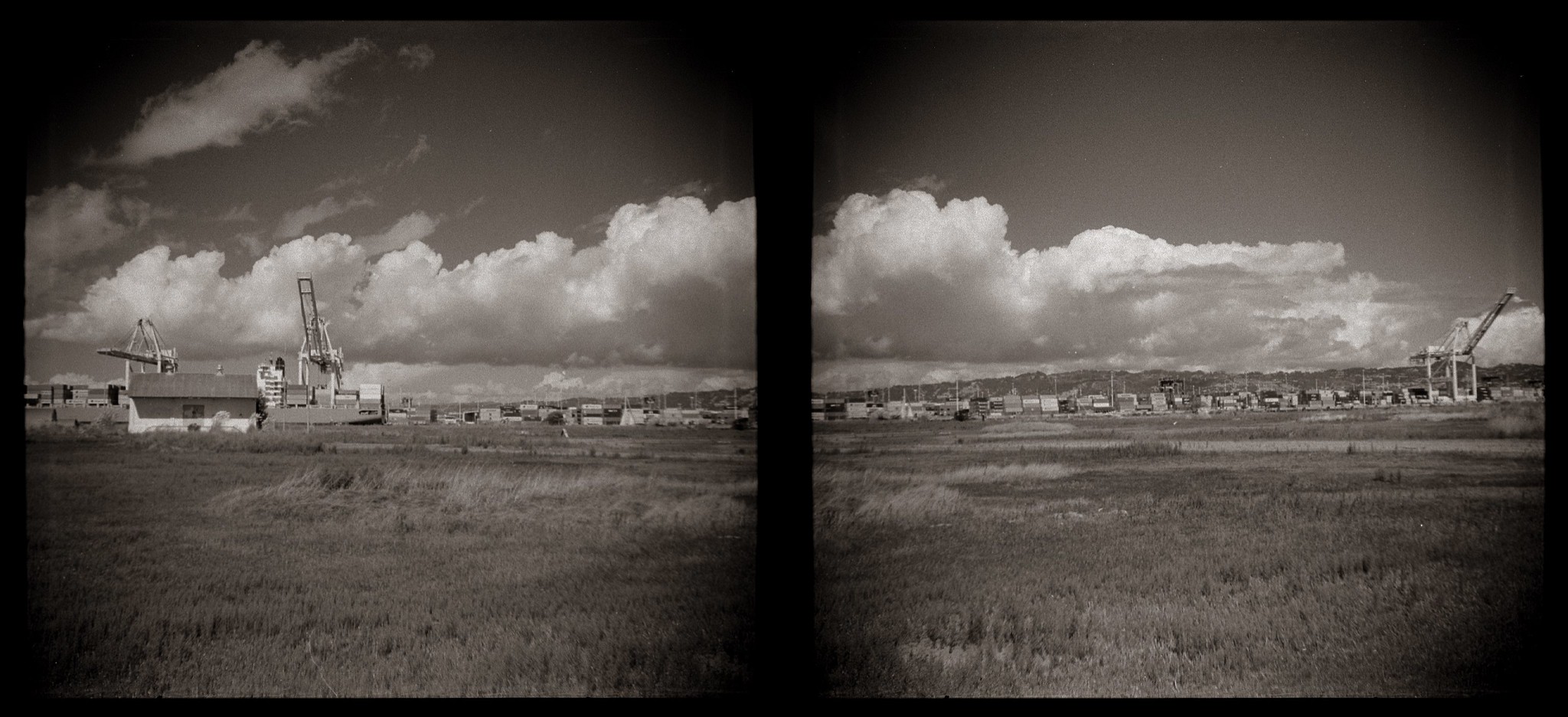
Cloudscape (Acorn Industrial, Oakland, California): photo by efo, September 2016

Cloudscape (Acorn Industrial, Oakland, California): photo by efo, September 2016

Cloudscape (Acorn Industrial, Oakland, California): photo by efo, September 2016

Cloudscape (Acorn Industrial, Oakland, California): photo by efo, September 2016
No comments:
Post a Comment